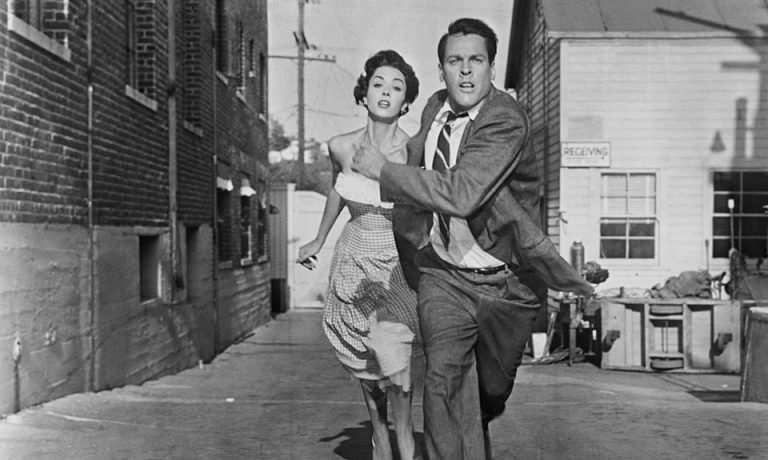Call for papers
International conference
THE IMAGES OF AMERICAN AND SOVIET ENEMIES
IN THE USSR AND U.S. COLD WAR FILMS
St Petersburg, 22-23 October, 2020
Organised by
- St Petersburg University;
- Research project “The Cinematic Images of Soviet and American Enemies in the Cold War Symbolic Politics: Comparative Analysis” (The Russian Science Foundation, grant No 18-18-00233).
| Conference Programme Committee: | Conference Organising Committee: |
| Oleg Riabov (St Petersburg University) – Chair | Alexander Kubyshkin (St Petersburg University) – Chair |
| Alexander Fedorov (Rostov State University of Economics) | Olga Davydova (St Petersburg University) – Deputy Chair |
| Sergei Kapterev (VGIK) | Sergei Belov (Moscow State University) |
| Dmitry Karavaev (VGIK) | Liudmila Kleshchenko (Herzen State Pedagogical University of Russia) |
| Rosa Magnusdottir (Aarhus University) | Marina Kulikova (St Petersburg University) |
| Irina Novikova (University of Latvia) | Tatiana Riabova (Herzen State Pedagogical University of Russia) |
| Tony Shaw (University of Hertfordshire) | Dmitry Smirnov (Ivanovo State University) |
| Natalia Tsvetkova (St Petersburg University) | Nina Sputnitskaya (VGIK) |
| Denise Youngblood (University of Vermont) | Kirill Yudin (Ivanovo State University) |
| Victoria Zhuravleva (Russian State University for the Humanities) |
Cinema was one of the main theatres of the ‘cultural Cold War’. Star actors, directors, screenwriters on both sides of the Iron Curtain took an active part in constructing the images of the American and Soviet enemies. Even the 1960s studies described images of ‘enemy number one’ created by Soviet and American propaganda as ‘mirror’ images. A comparative analysis of enemy images will reveal general patterns of the ‘cinematic Cold War’ and specific features commonly found in films of the two superpowers. We propose that the images of the enemy should be considered as a reason for reflection on discursive shifts, the evolution of fears, and the transformation of the relations of culture and ideology during the Cold War. The study of film images of the enemy during the Cold War seems even more relevant because they continue to influence the mutual perception of Russia and the United States. This happens also because they are actively used in current domestic and foreign policies. We hope that the study of the methods of constructing and exploiting enemy images will make it possible to contribute to a better understanding between the peoples of Russia and the United States.
Therefore, the conference focuses on a comparative analysis of:
- production, promotion, and consumption of Cold War Soviet and American cinematic images of ‘enemy number one’;
- cultural contexts of these images;
- their contemporary reception and exploitation in symbolic politics.
Thematic fields are:
1 The images of the enemy: An interdisciplinary approach.
2 The images of American and Soviet enemies in the Soviet and American Cold War cultures:
- Enemy images in ideology and philosophy;
- Enemy images in visual culture (caricatures, comic strips, posters, photography);
- Enemy images in popular music;
- Enemy images in literature.
3 The images of American and Soviet enemies in the Soviet and American Cold War cinema:
- The role of Soviet and American World War II films in creating the images of ‘enemy number one’;
- Stages in evolution of enemy images in 1946-1991;
- Institutional and ideological control over production, promotion, and consumption of cinematic images of the enemy;
- Cinematic means of creating enemy images;
- Enemy images in family movies, animated and non-fictional films;
- Enemy images in historical films;
- Dehumanisation as a means of constructing the enemy;
- The ‘external enemy’ and the ‘internal enemy’;
- Using cinematic images of American and Soviet enemies in the politics of Soviet identity and that of American identity;
- Gender discourses as a resource of creating cinematic images of the enemy;
- Exploiting the theme of racial / ethnic discrimination in producing enemy images;
- Children’s images as a resource of creating cinematic images of the enemy;
- Representations of ‘our’ and ‘their’ space as a resource of creating cinematic images of the enemy;
- Music as a resource of creating cinematic images of the enemy;
- Semiotics of cinematic images of the enemy;
- Linguistic means of producing cinematic images of the enemy;
- Enemy images in movie posters;
- Ways of deconstructing enemy images in the films of détente and perestroika;
- Reception of cinematic images of the enemy by the Cold War audience;
- Rivalry and cooperation between cinematographers of the USSR and the USA.
4 Cinematic images of Soviet and American Cold War enemies today:
- Reception of the Cold War films by Russian and U.S. audiences;
- Cold War nostalgia in films: Russian and American perspectives;
- Cinematic images of the Cold War in Russia’s and U.S. symbolic politics: actors, forms, and techniques.
The working languages are Russian and English. There is no conference fee. Please note that travel and accommodation funds cannot be provided. If so required, the conference will be held online.
Please send the proposals to riabov1@inbox.ru no later than 20 August, 2020. The notification of acceptance will be sent to the corresponding author by 1 September, 2020.
On behalf of the Programme Committee:
Professor Dr Oleg Riabov,
Leading researcher at the Department of Political Science,
St Petersburg University
E-mail: riabov1@inbox.ru
The conference web page http://en.coldwarenemy.ru/cold_war_cinematic_images_enemy_engl/
International conference
THE IMAGES OF AMERICAN AND SOVIET ENEMIES
IN THE USSR AND U.S. COLD WAR FILMS
St Petersburg, 22–23 October, 2020
APPLICATION FORM
Last name, first name ___________________________________________
Institution _____________________________________________________
Position ________________________________________________________
Academic degree ________________________________________________
E-mail __________________________________________________________
Presentation title _________________________________________________
Abstract (200 – 300 words) _________________________________________
_________________________________________________________________

